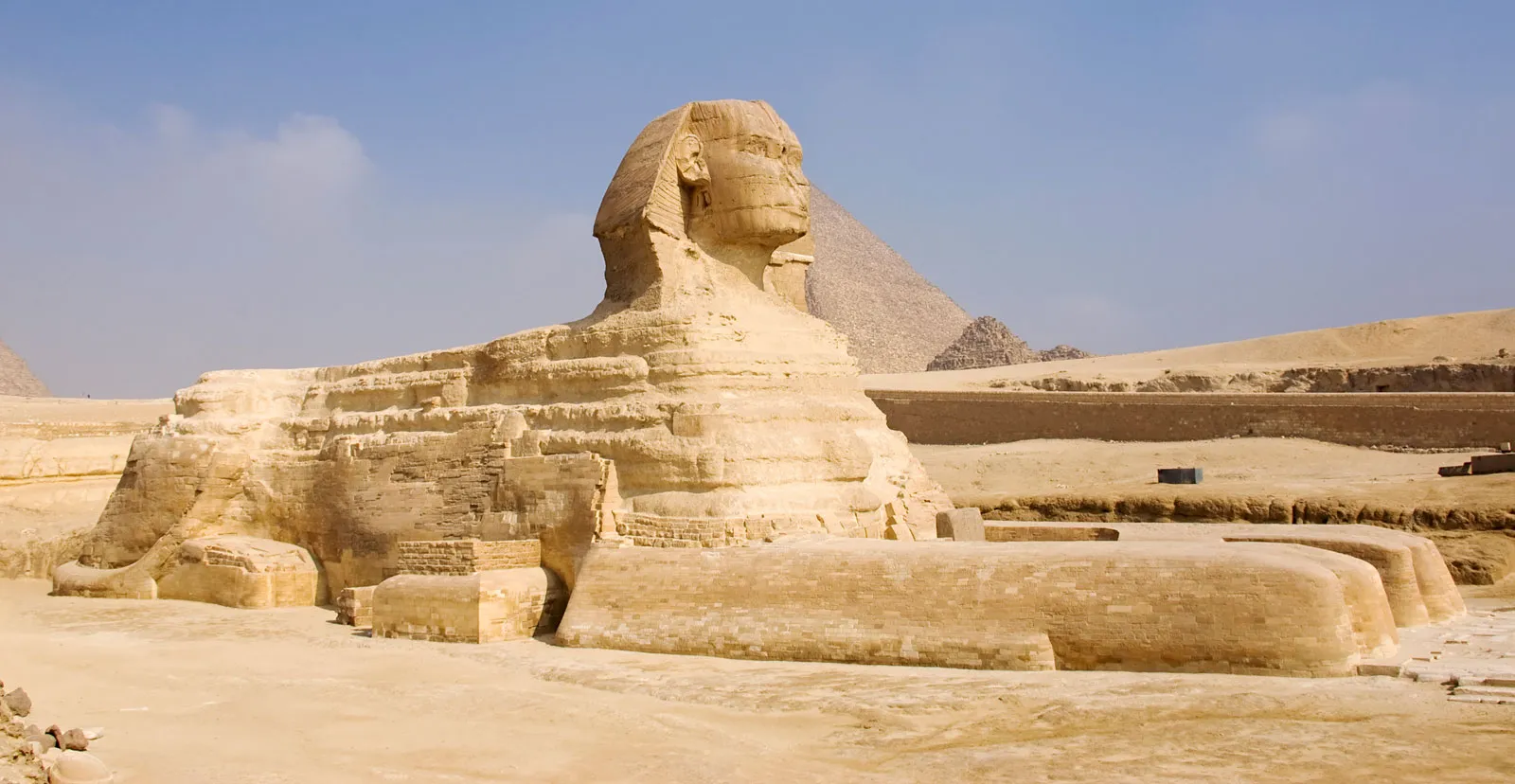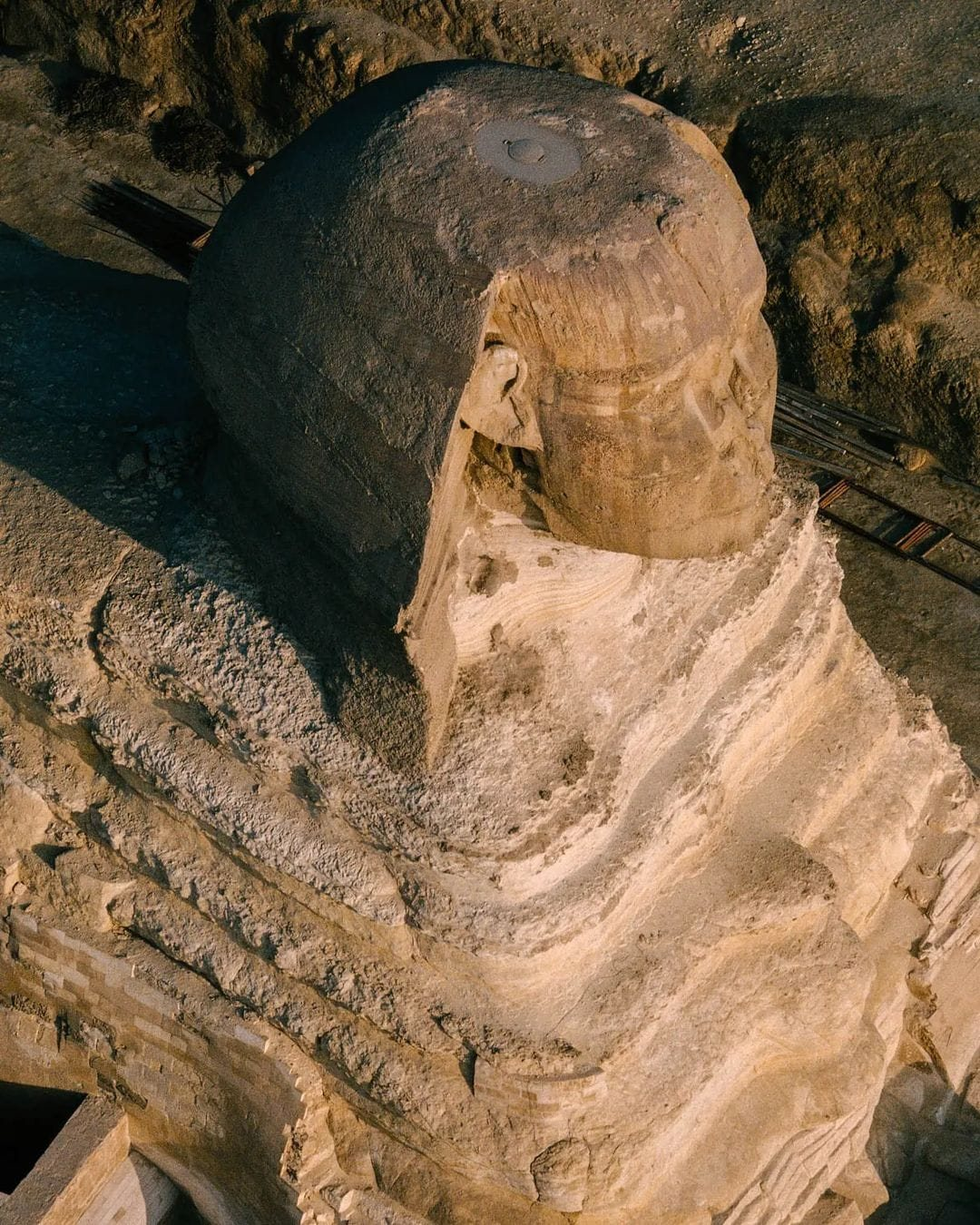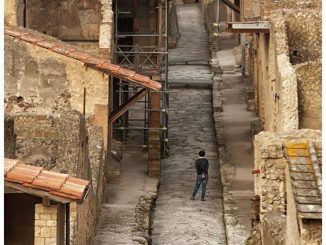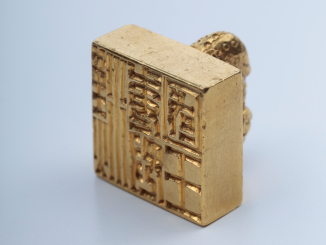

is the most instantly recognizable statue associated with ancient Egypt and among the most famous in the world. The sculpture, of a recumbent lion with the head of an Egyptian king, was carved out of limestone on the Giza plateau probably in the reign of the king Khafre (2558-2532 BCE) during the period of the Old Kingdom of Egypt (c. 2613-2181 BCE), although some scholars (notably Dobrev in 2004 CE) claim it was created by Djedefre (2566-2558 BCE), Khafre’s brother who tried to usurp the throne after the death of the king Khufu (2589-2566 BCE), the creator of the Great Pyramid.
Other Egyptologists, and scholars, professors, and historians from outside the field, have claimed the Sphinx is much older than the 4th-Dynasty date mainstream Egyptology continually insists on. The claims of some of these writers, such as Zechariah Sitchin and Erich von Daniken, have long been discredited by scholarship in the field, and those of more recent writers on the subject are routinely ignored or claimed to be irrelevant or incorrect.
The Sphinx measures 240 feet long (73 m) and stands 66 feet high (20 m), oriented on a straight west-to-east axis.
It is commonly accepted among Egyptologists, however, that the Sphinx was built under the reign of Khafre during the Old Kingdom’s 4th Dynasty when masons who were constructing his pyramid complex came upon a large piece of limestone and decided – or were directed – to carve the Sphinx from it. Why this was done and what purpose the Sphinx originally served is continually debated.
The Sphinx is directly in line with Khafre’s pyramid complex and this also supports the claim that he was its creator. The location of the statue, however, and how it lines up with Khafre’s complex, has led some scholars (such as Stadelmann of the German Archaeological Institute of Cairo) to believe that the Sphinx already existed when Khafre came to the throne and his complex was purposefully designed to line up with the sculpture.
The statue was never known as ‘the sphinx’ by the ancient Egyptians. The word ‘sphinx’ is Greek and came to be applied to the Egyptian sculpture at Giza, according to Verner (and others) through a translation of the Egyptian name shesep–ankh (“living image”) by which the Egyptians referred to the piece. During the time of the New Kingdom of Egypt(1570-1069 BCE), the Sphinx was known by the Egyptians as Horemakhet (Horus of the Horizon) and a cult grew up around the statue associating it with the god Horus.
The 4th-century CE Coptic Christians called the statue Bel-hit (The Guardian), and this name is still used today. Egyptians of the present day do not refer to the statue as ‘the Sphinx’ unless they are discussing it with foreign tourists. The piece is known in Egyptian Arabic as Abu al-Hawl, ‘The Father of Terror,’ and has been claimed to be an idolatrous abomination by some extreme factions of Islam. In 2012 CE, in fact, clerics associated with the Taliban called for the destruction of the Sphinx and the pyramids of Giza for this reason.
The famous English Egyptologist E. Wallis Budge (1857-1934 CE) claimed that the Sphinx was much older than Khafre’s time and could have been created in the Early Dynastic Period or even earlier. A more significant argument for the earlier construction of the monument is that, although archaeologists have found inscriptions and evidence relating to the construction of the pyramids of Giza in the 4th Dynasty, how the workers were housed, what they ate, how they were paid, there is never any mention of the Sphinx. This fact is especially significant when one considers how carefully the Egyptians documented building projects. Even if one were to claim – as some have – that such evidence simply has not yet come to light, it still seems odd that such a large and obviously significant structure would not be mentioned anywhere by anyone at the time it was supposedly built.


